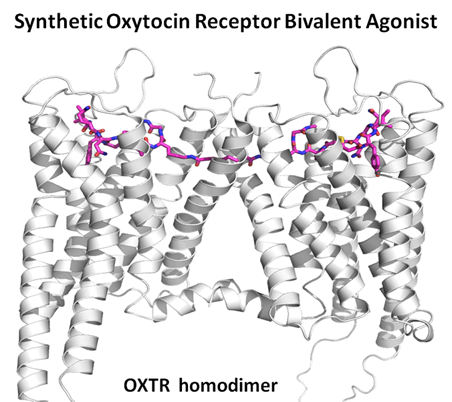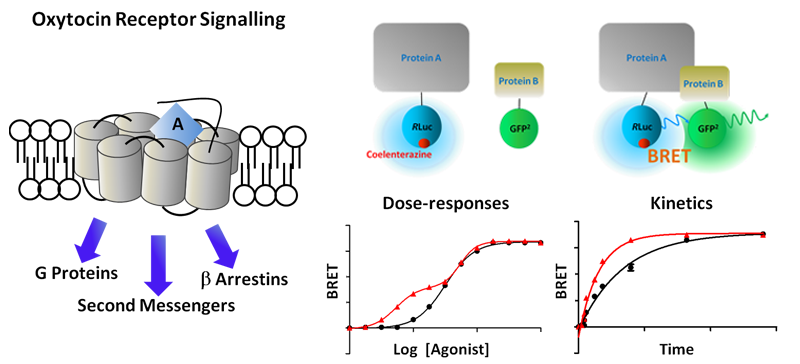Busnelli Marta
- Dettagli
- Visite: 4503
 Researcher
Researcher
c/o Università di Milano - Bicocca
Via Raoul Follereau, 3
20854 Vedano al Lambro (MB)
Questo indirizzo email è protetto dagli spambots. È necessario abilitare JavaScript per vederlo.
Tel. 02 64488379
Research activity
G protein-coupled receptors (GPCR) are the largest family of cell surface receptors and mediate the effects of a wide variety of chemical transmitters, including amines, amino acids, peptides, lipids, nucleosides, odorants and light. In the nervous system GPCRs have essential and diverse functions that could be disrupted in many neurological disorders.

In particular we study the oxytocin receptors (OXTR) that are widely distributed in the central and peripheral nervous system. In the brain, these receptors act as key controllers of socio-emotional behaviors, whereas in the spinal cord they control nociception.
OXTRs can couple to different G proteins, generating different second messengers and different cellular and neuronal responses, and they can also form complexes with other types of GPCRs, i.e. dopamine receptors, allowing the functional crosstalk between the different systems to produce a cellular response.
The main goal of the lab is to screen and to develop new OXTR active molecules for the treatment of: neurodevelopmental diseases, such as autism spectrum disorders; neuropsychiatric disorders, such as schizophrenia, and pain.
By using various pharmacological, biochemical and biophysical approaches, including biosensors based on resonance energy transfer, we are studying the binding and signaling properties of specific ligands for OXTRs and OXTR heterodimers with the goal of identifying new drugs with increased therapeutic efficacy and no undesirable effects.

Representative publications
Design and Characterization of Superpotent Bivalent Ligands Targeting Oxytocin Receptor Dimers via a Channel-Like Structure. Busnelli M, Kleinau G, Muttenthaler M, Stoev S, Manning M, Bibic L, Howell LA, McCormick PJ, Di Lascio S, Braida D, Sala M, Rovati GE, Bellini T, Chini B. J Med Chem. 2016 Aug 11;59(15):7152-66. doi: 10.1021/acs.jmedchem.6b00564.
Carbetocin is a Functional Selective Gq Agonist That Does Not Promote Oxytocin Receptor Recycling After Inducing β-Arrestin-Independent Internalisation. Passoni I, Leonzino M, Gigliucci V, Chini B, Busnelli M. J Neuroendocrinol. 2016 Apr;28(4). doi: 10.1111/jne.12363.
Assembling the Puzzle: Pathways of Oxytocin Signaling in the Brain., Grinevich V, Knobloch-Bollmann HS, Eliava M, Busnelli M, Chini B., Biol Psychiatry. 2016 Feb 1;79(3):155-64. doi: 10.1016/j.biopsych.2015.04.013.
Selective and potent agonists and antagonists for investigating the role of mouse oxytocin receptors. Busnelli M, Bulgheroni E, Manning M, Kleinau G, Chini B. J Pharmacol Exp Ther. 2013 Aug;346(2):318-27. doi: 10.1124/jpet.113.202994.
Functional selective oxytocin-derived agonists discriminate between individual G protein family subtypes, Busnelli M, Saulière A, Manning M, Bouvier M, Galés C, Chini B. J Biol Chem. 2012 Feb 3;287(6):3617-29. doi: 10.1074/jbc.M111.277178.











